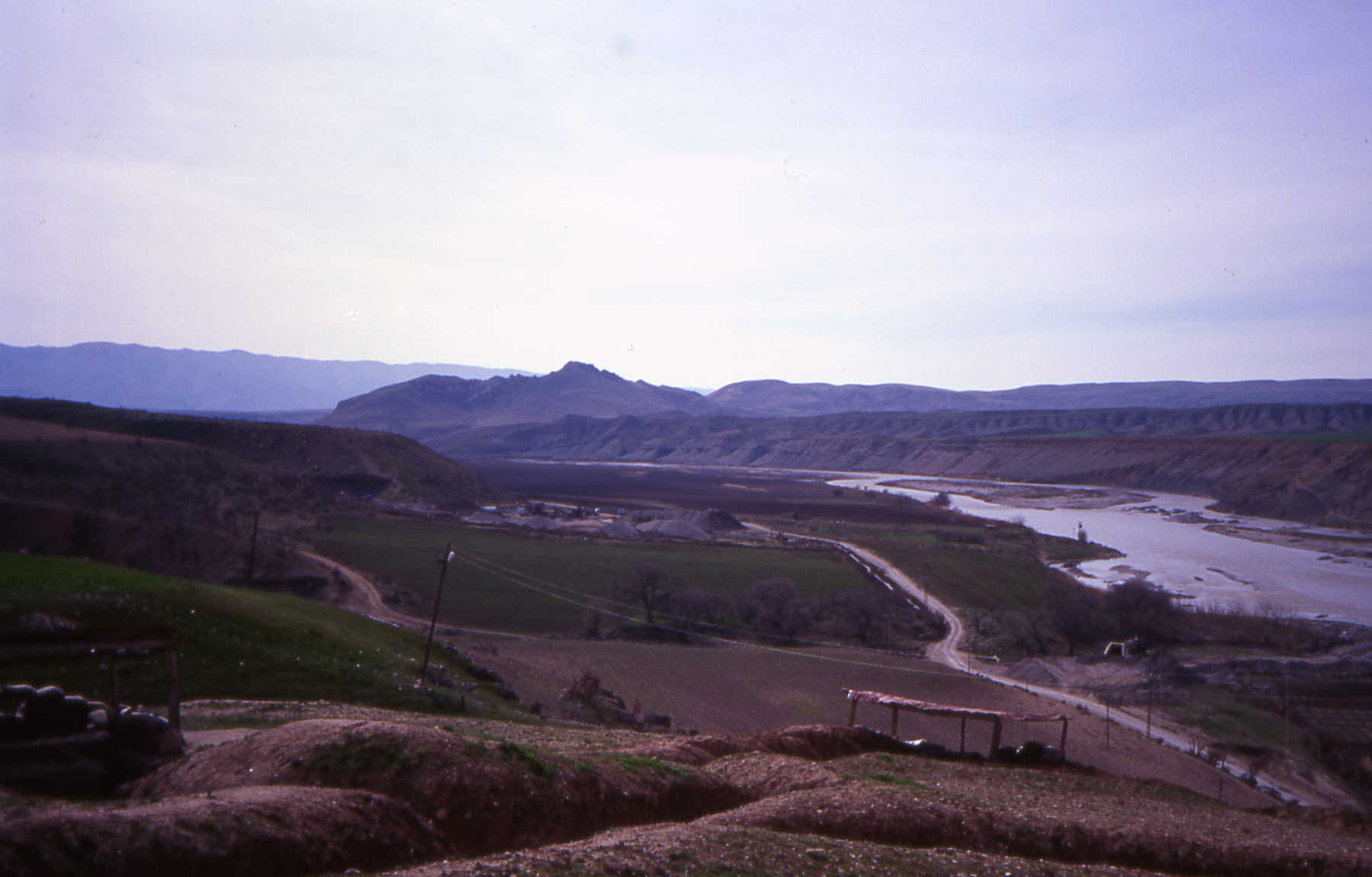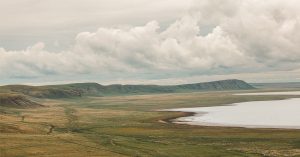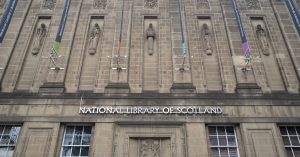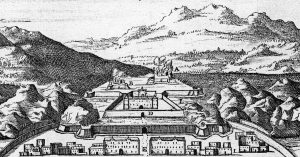
Xenophon’s Anabasis tells the story of a failed rebellion by a Persian prince against his brother, the King, in 401 BCE and of what happened afterwards to the Greek mercenaries who had enlisted in his army. The events are told by Xenophon of Athens, a writer and student of Socrates, who was one of those who had joined prince Cyrus. Xenophon subtly integrates into his account a number of the themes that recur across his oeuvre, and ultimately in my book’s argument produces a ‘Socratic history’ whereby the teachings and values of the philosopher are embedded into the narrative.
Find out more about Xenophon’s Anabasis: a Socratic History
All of the thematic elements in Anabasis draw on and are underpinned by the journey, an epic struggle to overcome enemies and endure hostile terrain and weather.
This selection of sixteen photographs together with the accompanying descriptions by Xenophon aim to provide a sense of the travel experience from the journey’s beginning at Sardis to the army’s famous sighting of the Black Sea from the mountains south of modern Trabzon. Most illustrate landscapes but some capture chronologically earlier or later features that lay on or close to the army’s probable route. These are reminders of both the historical richness of this region and of the layering and intertwining of different cultures over time.
Except for the last two, the photographs were taken in the course of a journey in 2000-01 following in the footsteps of the ‘Ten Thousand’ Greeks. The translations are from David Thomas’ in the Landmark edition, which supplies a full context for the march. At the end of the post you can find a link to this and other resources on the subject.
1. Temple of Artemis, Sardis (Turkey). Starting point of Cyrus the Younger’s secret rebellion against the King
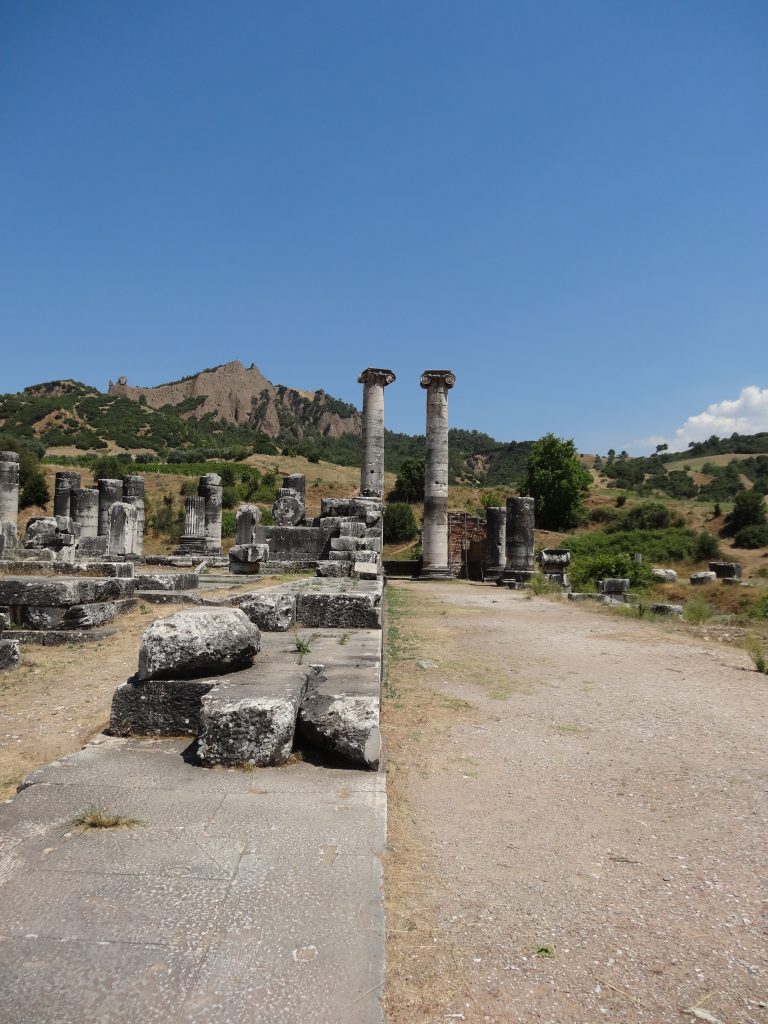
So these troops arrived at Sardis to assist Cyrus; but when Tissaphernes [Persian satrap] realized what was happening, he concluded that the preparations were greater than were required for an attack on the Pisidians, and he made his way to the King as fast as he possibly could, together with about five hundred cavalry. The King on his side, when he heard from Tissaphernes about Cyrus’ armament, set about making counter preparations. Anabasis 1.2.4-5.
2. Kelainai, modern Dinar. Duden spring
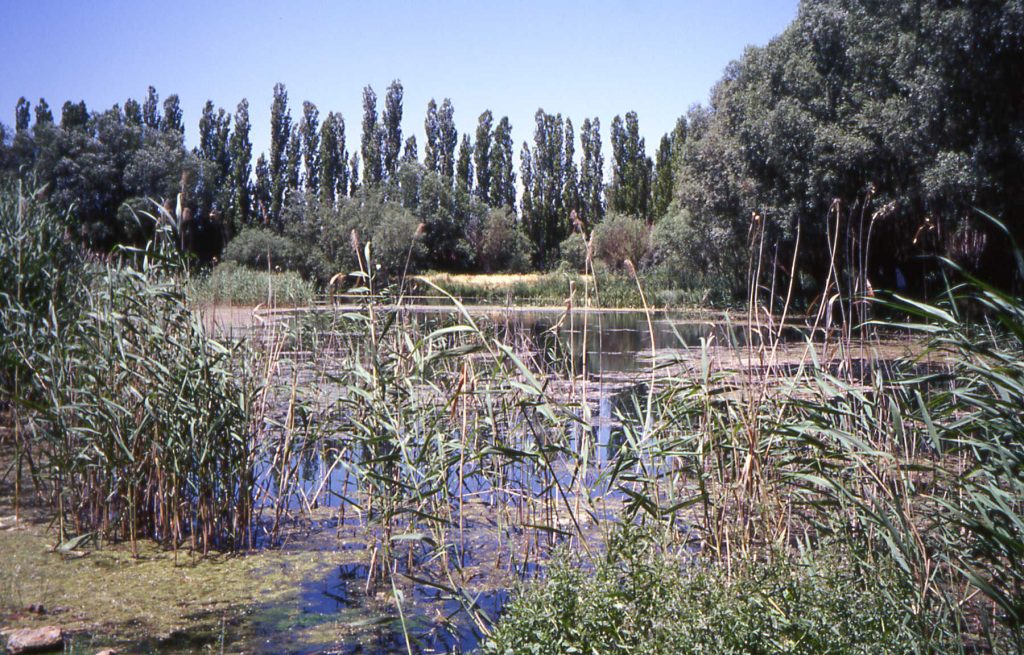
From there [Colossae] Cyrus pushed on for three days’ march, covering twenty parasangs, to Kelainai, a populous city in Phrygia, large and prosperous. Cyrus had a palace here and an extensive park full of wild animals, which he used to hunt on horseback whenever he wanted to exercise himself and his horses. The river Maeander flows through the middle of the park, and its springs come up in the palace grounds. Anabasis 1.2.7.
3. Mountain spring by the roadside near Ulupınar (‘great spring’), Akşehir. The water source had dried up by 2010
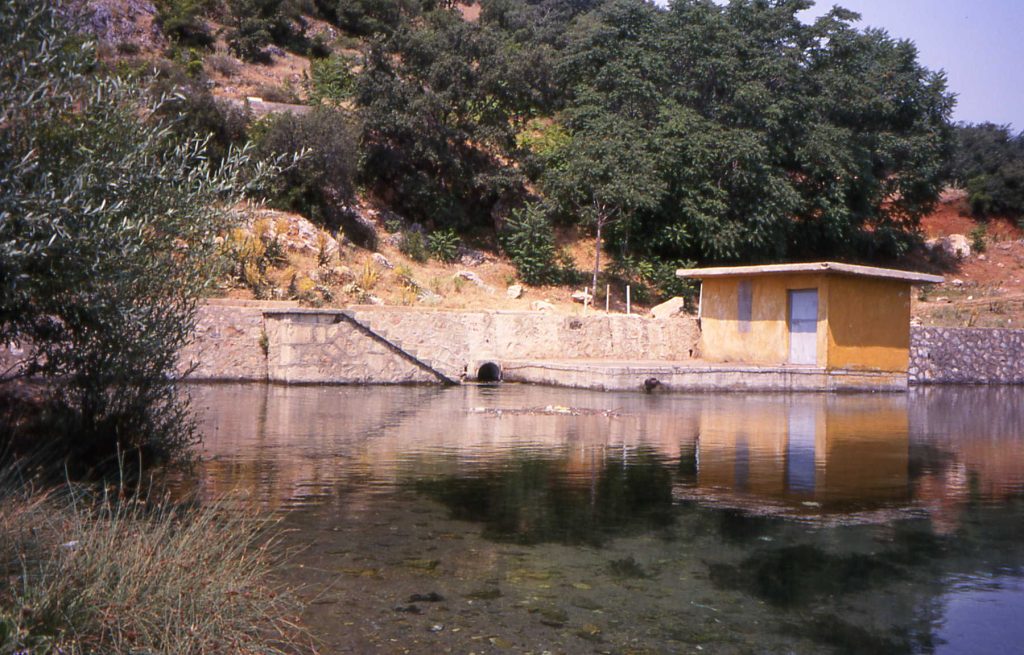
From there [Kaystrupedion] he pushed on for two days’ march, covering ten parasangs, to Thymbrion, a populous city. There by the side of the road was a fountain, called the fountain of Midas, the Phrygian king, at which Midas is said to have caught the satyr by mixing the water of the fountain with wine. Anabasis 1.2.13.
4. Wall painting depicting a deer hunt, Çatalhöyük museum
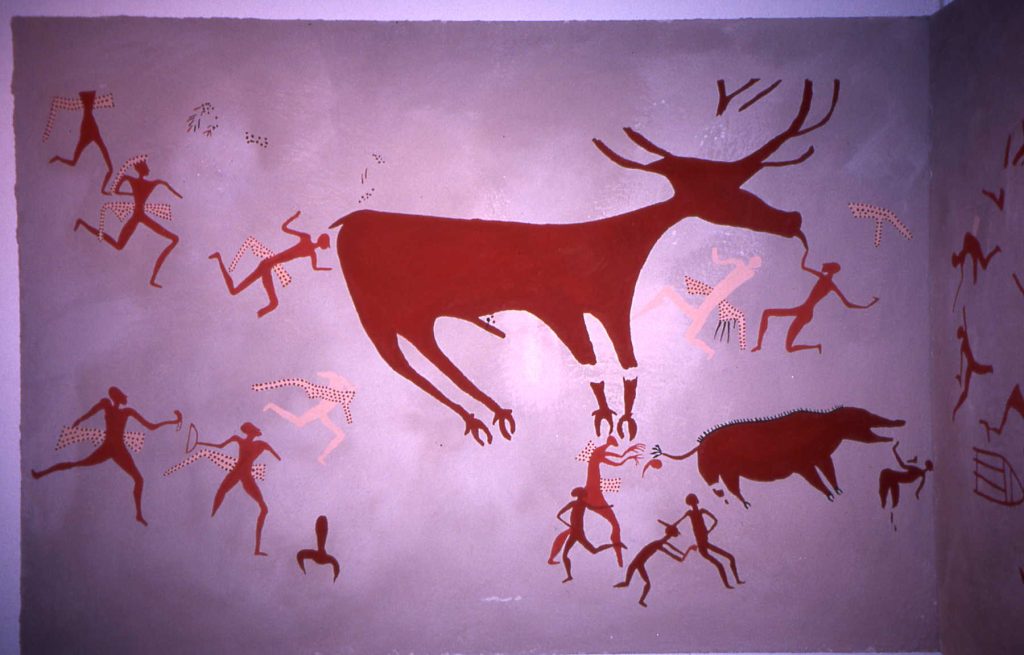
5. Village woman, west of the Taurus Mountains.
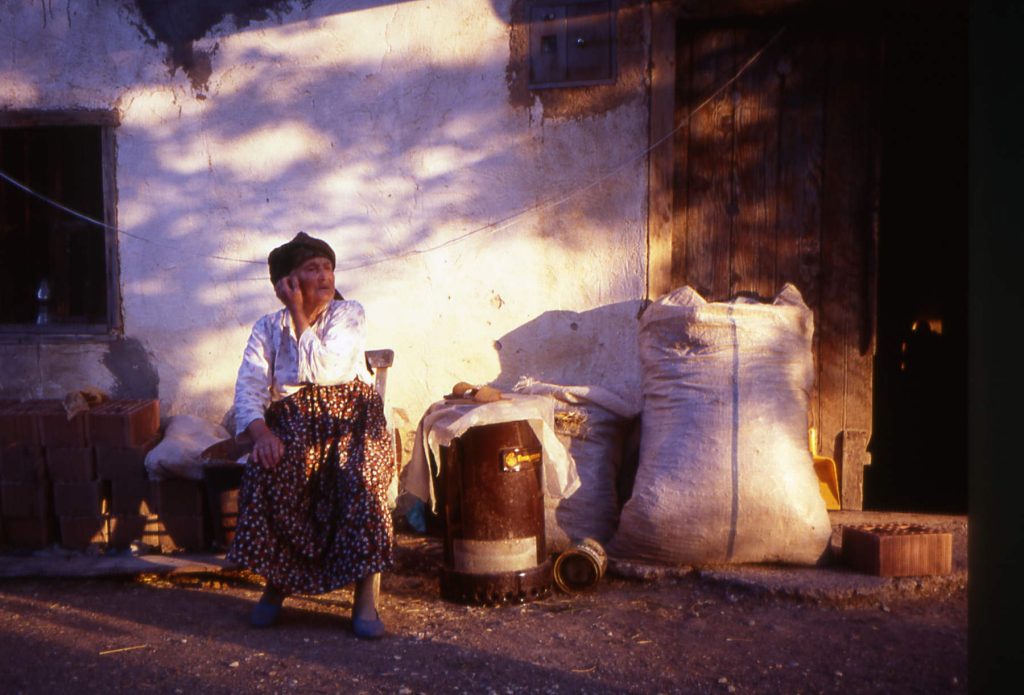
6. Cyrus sent Menon the Thessalian and his army across the Taurus Mountains
Cyrus sent Menon the Thessalian and his army across the Taurus Mountains by a southerly route, with the main body crossing further to the north. The image shows a trail in the southern section. The mountains encircled Cilicia, a semi-autonomous region of the empire whose king was Syennesis.

From there they set about trying to force their way into Cilicia. The approach route was a wagon road that was exceedingly steep and, if anyone was blocking it, impossible for an army to get through. Syennesis was also said to be on the heights guarding the approach; as a consequence Cyrus remained in the plain for a day. On the next day a messenger came, saying that Syennesis had left the heights, since he had learned that Menon’s army was already in Cilicia on the inner side of the mountains and he was hearing that triremes belonging to the Lakedaimonians and to Cyrus himself were sailing around from Ionia to Cilicia. Anabasis 1.2.21.
7. Church of St Symeon Stylites (Syria)
The site overlooks the Chalos (modern Afrin) River valley, through which the army marched almost 1,000 years before the monument was built. Xenophon’s description hints at a religious fervour in the inhabitants of the valley that may foreshadow the later extraordinary piety of Symeon. The church is reported to have been badly damaged in the Syrian civil war.
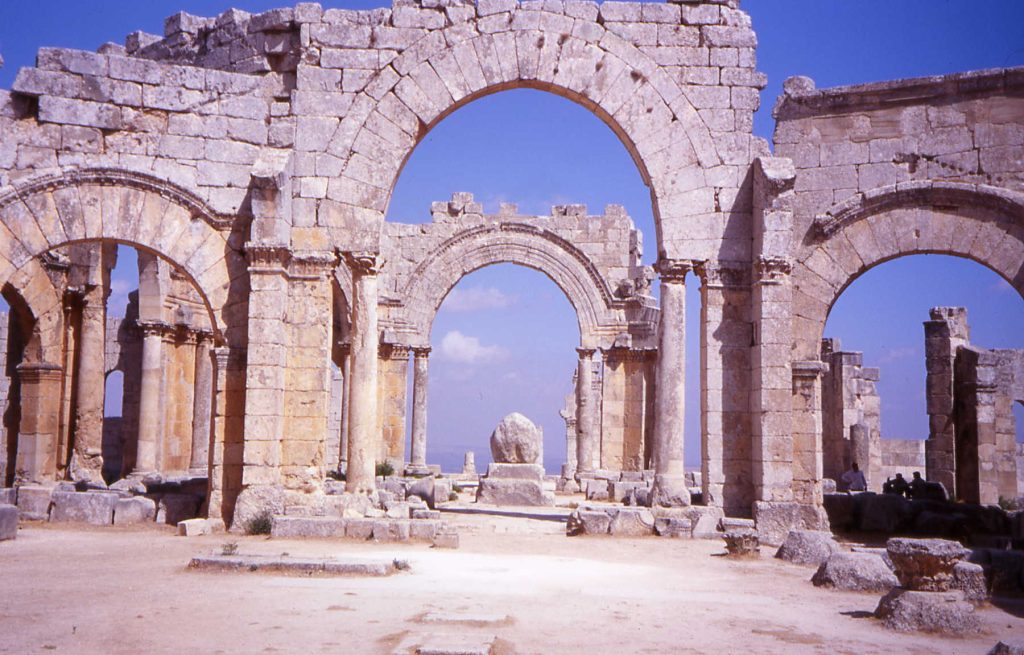
After these events Cyrus pushed on for four days’ march, covering twenty parasangs, to the river Chalos, which was one hundred feet in width and full of great tame fish. The Syrians regarded these as gods and would not allow them to be harmed; the same was true of the doves there. The villages in which the troops took up their quarters belonged to [the queen mother,] Parysatis, having been given to her to pay for her girdles. Anabasis 1.4.9.
8. Jubbah. Island in the Middle Euphrates, perhaps near the site of Charmande (Iraq)
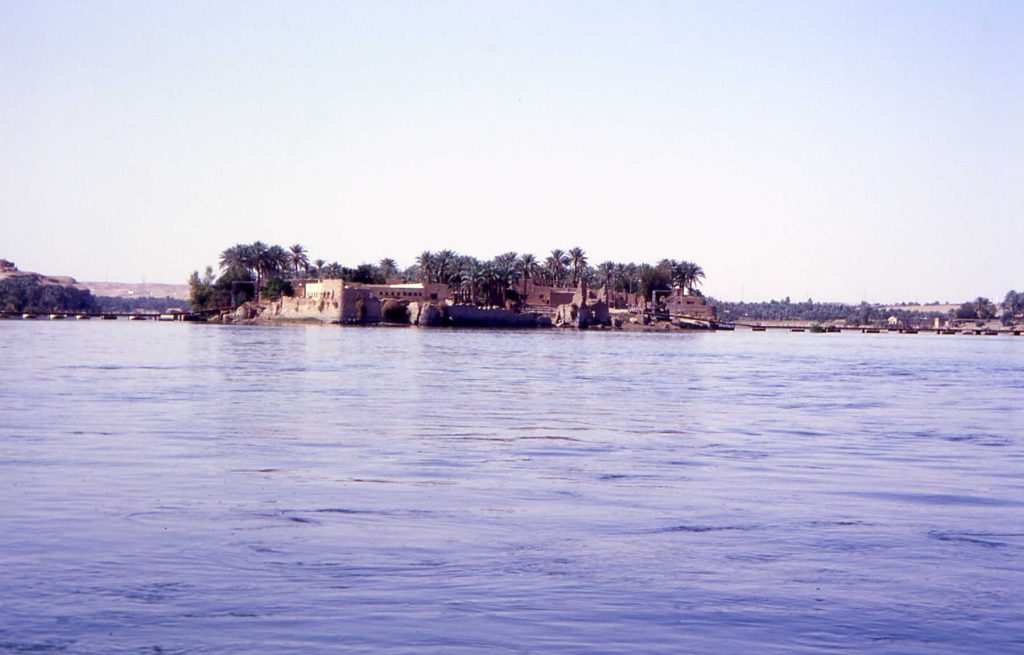
On the other side of the river Euphrates, during these desert marches, was a large and prosperous city called Charmande. The soldiers obtained their food supplies from the market there, crossing the river on rafts in the following way: they filled hides, which they had for use as shelters, with light fodder and then gathered them together and stitched them up so that the water would not touch the dry hay. It was on these that they used to cross the river and so acquire their supplies, both wine made from the kernel of the date palm and bread made from foxtail millet, as this type of grain was very plentiful in the land around. Anabasis 1.5.10.
9. Remains of Ziggurat at Assur, near the Tigris River
The site probably corresponds to the one that caught Xenophon’s attention on the opposite side of the river.
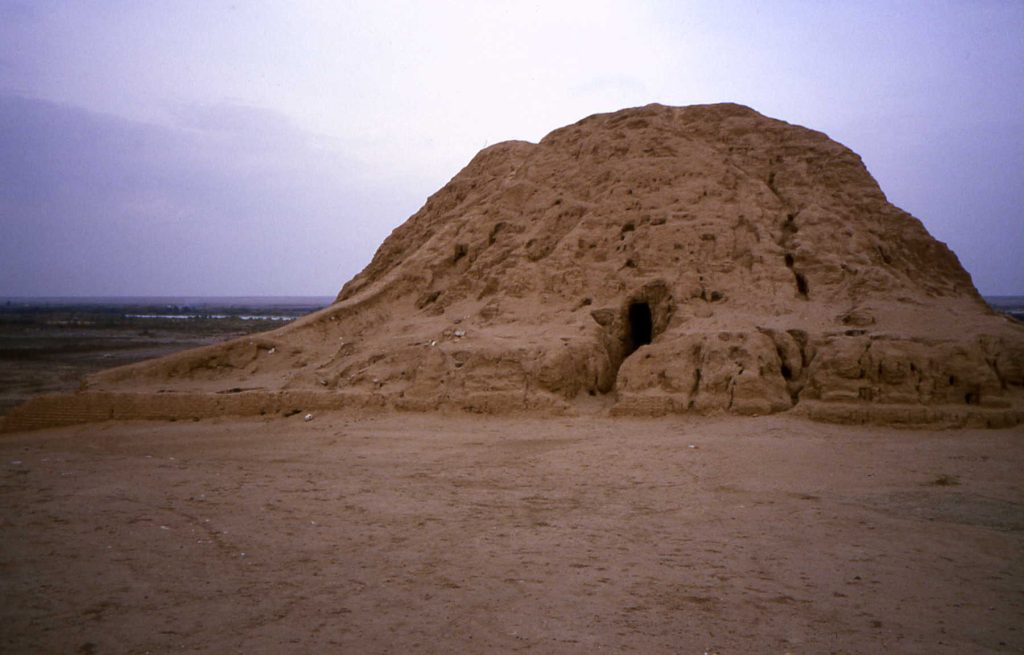
From there [more villages of Parysatis] they made their way through uninhabited country for four days’ march, covering twenty parasangs, with the river Tigris on their left. In the course of the first day’s march, there was a large and prosperous city on the other side of the river, Kainai by name, from which the barbarians brought over bread, cheeses, and wine on rafts made of prepared hide. Anabasis 2.4.28.
10. Centrites River (modern Botan Su, Turkey)
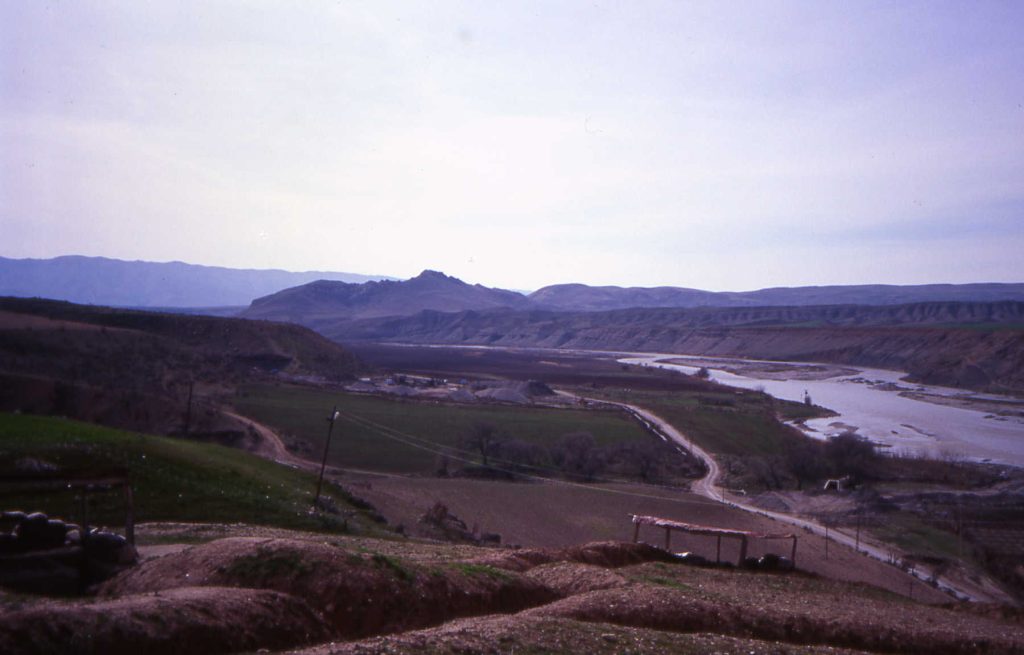
11. Winter snow in the historic Armenian highlands

While they camped there, there was a heavy snowfall in the night, and just after dawn they decided that the various units, along with their respective generals, should be split up and billeted in the villages, as they saw no one hostile and they appeared to be safe from attack because of the great quantity of snow. Anabasis 4.4.8.
12. Muş Plain
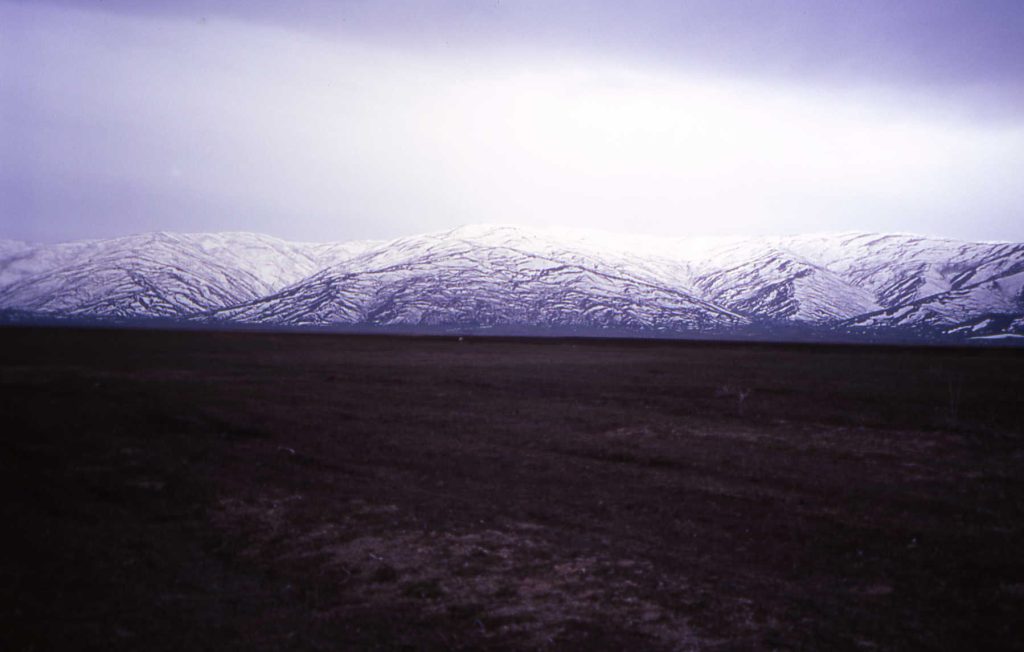
They made their way for three days, covering fifteen parasangs, to the river Teleboas, a beautiful river but not a big one, with many villages around it. This area was called Western Armenia. Its lieutenant governor was Tiribazos who was a friend of the king himself: whenever he was present, it was he and no one else who helped the king mount his horse. Anabasis 4.4.3-4.
13. Euphrates (Murat) River

From there they made their way onward for three desolate days’ march, covering fifteen parasangs, to the river Euphrates and crossed it with the water at waist height. The river’s sources were said to be not much farther on. Anabasis 4.5.2.
14. Çakırbaba Pass. View of the Bardız Plain and, in the distance, the snow-capped Black Sea Mountains
Xenophon describes how enemies blocked their way over a pass as they ascended out from the Aras River basin. This may be the one in question, but some place it much further up the valley. Once they had crossed this watershed, all rivers led to the Black Sea.
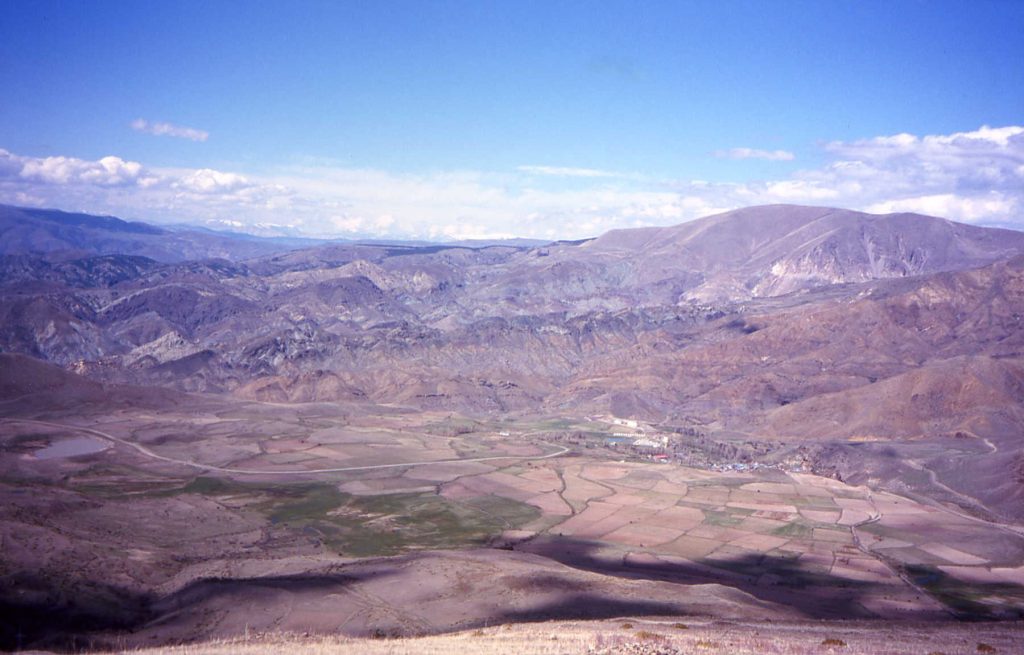
On the pass to the plain beyond, the Chalybes, Taochoi, and Phasianoi stood ready to meet them…Most of the enemy waited on the mountain pass, but a party of them went to meet those coming over the heights. Before the main bodies of the two armies closed on each other, the detachments on the heights were fighting hand to hand, and the Greeks were victorious and started the pursuit.
Meanwhile the Greek force coming from the plain also quickened its pace as the peltasts broke into a run toward the enemy battle line and Cheirisophos followed with the hoplites at a quick march. When the enemy on the road saw that their party on the higher ground was getting the worst of it, they fled. A few of them were killed, and a great number of wicker shields were captured, which the Greeks rendered useless by hacking them with their sabers. When they had ascended the pass, they performed a sacrifice and set up a trophy;they made their descent into the plain, where they came to villages full of many good things. Anabasis 4.6.5, 24-27.
15. Approach to the north-western spur of Polut Dağı
The possible site of Mount Theches, the iconic spot from where the Greeks sighted the Black Sea. Once they descended and reached a port they would hope to sail home, but in the event there were not sufficient ships at Trapezus and they were forced to continue by land as far as Sinope.
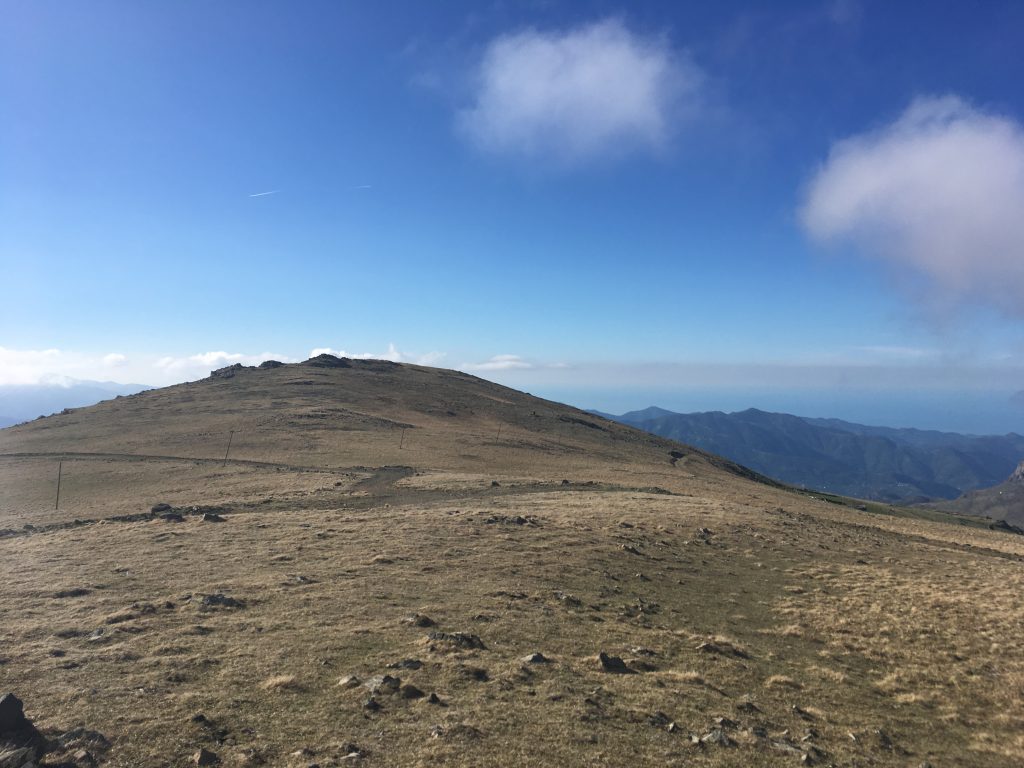
When the vanguard got high up on the mountain, a great clamour arose. On hearing it, Xenophon and the rearguard thought that there were further enemies in front of them, in addition to those who were following behind them from the region in flames. By setting an ambush, the rearguard had killed several of the latter and taken others alive, and they had captured about twenty wicker shields covered with raw, shaggy oxhides.
Now the noise grew louder and nearer, and constantly, as the advancing ranks got closer to it, they would break into a run, speeding toward their comrades on the heights; it was their constant shouts that were the cause of the noise, which became much greater the more of them there were. Anabasis 4.7.21-23.
16. View towards the Black Sea from the height
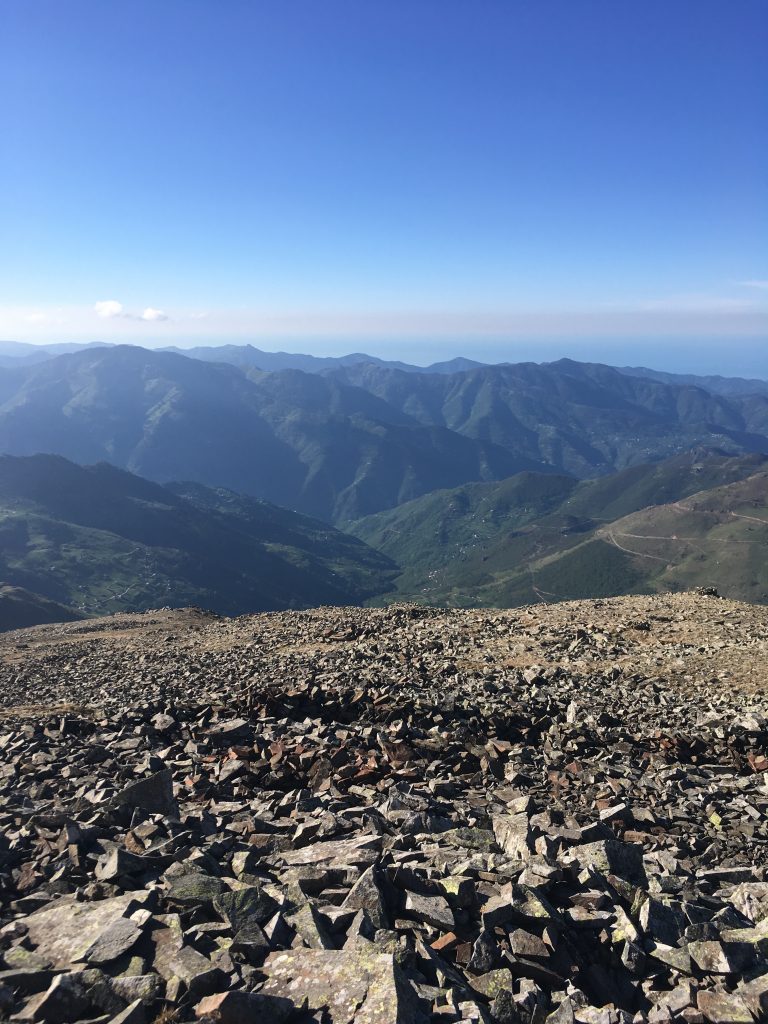
So it seemed to Xenophon that it was something really important, and mounting his horse and taking Lykios and the cavalry with him, he went to help. Very quickly they heard the soldiers shouting, “the sea, the sea!” and repeating it from one to the other like a watchword. Then naturally all the rearguard started to run too, and the draft animals were urged on, as well as the horses. When they all reached the summit, then and there they embraced each other, and generals and captains too, with tears in their eyes. Someone passed the word, and all of a sudden the soldiers began bringing stones and making a great cairn. Anabasis 4.7.24-25.
About the author

Shane Brennan is a historiographer specialising in Xenophon’s Anabasis. You can find out more about Xenophon’s Anabasis on our wesbite here use code EVENT30 for . He is also co-editor of The Landmark Xenophon’s Anabasis (2021) and author of a number of articles on the subject. He has worked at universities in Turkey and the UAE and is currently on a year’s break from teaching.
Author Anabasis links:
The Landmark Xenophon’s Anabasis
School of War podcast. Discussing Xenophon’s Anabasis with Aaron MacLean
You can see more images of the army’s route on Instagram @shaneyolda


